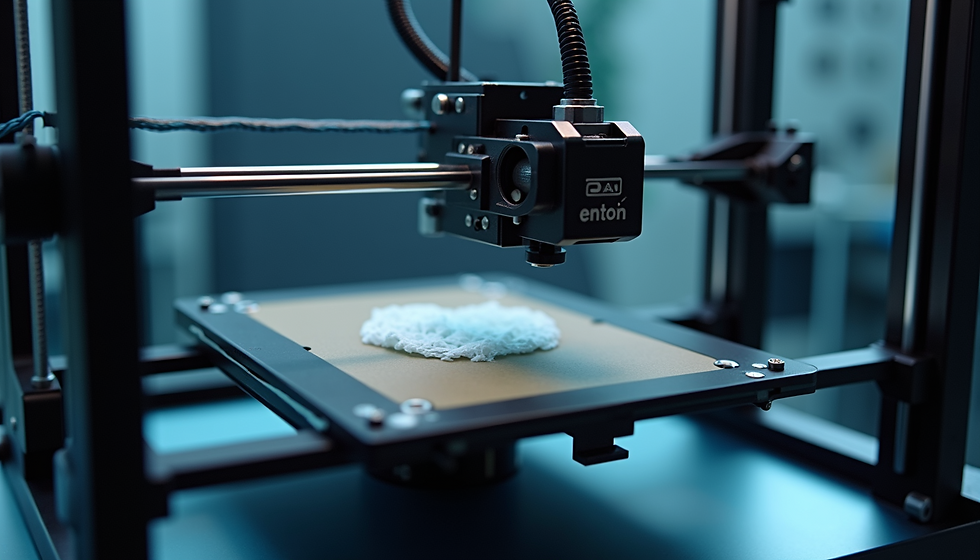Essential Tips for Creating High-Quality 3D Printing Files
- Mesh Mayhem
- May 11
- 4 min read
Updated: Jun 23
Creating high-quality 3D printing files is essential for achieving the best results in your projects. Whether you're a beginner or an experienced designer, understanding how to optimize your files can save you time, resources, and frustration. In this blog post, we will discuss essential tips for crafting superior 3D printing files, ensuring that your designs come to life perfectly.
Understanding 3D Printing Files
3D printing files are the backbone of any additive manufacturing process. They contain the instructions that guide the printer through the various stages of producing a physical object. The most common file formats used in 3D printing include STL, OBJ, and AMF. Each format has its perks, but STL remains the industry standard due to its simplicity and compatibility with most 3D printers.
Importance of High-Quality 3D Printing Files
High-quality 3D printing files lead to better prints. Poorly created files can result in failed prints, wasted materials, and compromised final products. A high-quality file ensures the following:
Accurate Dimensions: A well-constructed file maintains the integrity of the design dimensions.
Smoothing and Detailing: The finer details are preserved, leading to a more polished look.
Optimized Printing Speed: Efficient files can reduce printing times, saving you money.
By investing time in creating high-quality files, you significantly enhance the chances of producing fantastic prints.

Utilize Correct Modeling Software
Choosing the right software is crucial for creating high-quality 3D printing files. Software like Blender, Fusion 360, and Tinkercad offer various tools for precise modeling, but which one should you choose?
Beginners: Tinkercad is user-friendly and an excellent entry point for novices. It offers an intuitive interface, making it easy to design simple objects.
Intermediate: Blender is more advanced and allows for intricate designs. It's suited for those looking to create complex models.
Professionals: Fusion 360 provides robust features for engineering-level design. It’s ideal for users who require detailed parts and assemblies.
Understanding your needs and skill level will help you make the right choice in software.

Optimize File Settings for Printing
After modeling, setting up your file correctly is important for a successful print. Pay attention to the following aspects:
Resolution: High resolution is crucial for detailed prints. If you're printing a small intricate design, ensure the resolution is set high.
Mesh Density: A denser mesh will provide better details but may increase printing time. Balance is key.
Scale and Units: Ensure your model is scaled correctly. For instance, if you're designing something meant to fit a specific space, check unit settings to avoid size discrepancies.
Remember, too much detail in low-priority areas can slow down the print without adding value. Avoid excessive complexity that doesn’t contribute to the design.
Check for Common Errors in 3D Models
Even seasoned designers make mistakes. Common issues can undermine the quality of 3D printing files. Look out for:
Non-manifold Edges: These occur when edges of your mesh aren't shared properly, leading to confusion during printing.
Inverted Normals: This happens when surface normals are facing the wrong way, causing rendering issues.
Unwanted Geometry: Overlapping objects or hidden faces can cause printing failures. Always clean up your model before exporting.
Most 3D modeling software includes built-in tools for checking or repairing these errors. Utilize them to streamline your workflow.

Exporting the File for 3D Printing
Once your model is complete and free from errors, it’s time to export your file. Here are some general guidelines:
Choose the Right Format: Generally, STL is the most compatible format. However, if you're working with textures or colors, consider OBJ or AMF.
Export Settings: Check your software’s export settings. Make sure to select the correct scale, resolution, and any necessary slicing options specific to your printer.
File Naming Convention: Keep your file names clear and straightforward, especially if you're working with multiple versions. This prevents confusion later on.
Proper exporting ensures your printer receives the correct instructions for creating your model without errors or misinterpretations.
Learning from the Community
Joining local or online communities is a great way to improve your skills in 3D printing. Platforms like forums, Reddit, and even specialized sites like mesh mayhem are valuable resources. You can:
Share Your Work: Get feedback on your designs.
Ask Questions: Inquire about specific challenges you’re facing.
Learn Best Practices: Discover tips and tricks from experienced designers.
Engaging with others can introduce you to new techniques and enhance your proficiency in file creation.
Final Tips for Crafting Requests
Here is a checklist to ensure your 3D printing files are top-notch:
Test Print Smaller Versions: Before committing to a large piece, print a small version to check quality and dimensions.
Stay Updated: Keep your software and printer firmware updated to maximize performance and fix any bugs.
Experiment: Don’t be afraid to try new designs or techniques. Learning often comes through trial and error.
Creating high-quality 3D printing files is an essential skill that rewards you with excellent prints. By following these tips, you will be well on your way to becoming a seasoned 3D printing designer, ready to take on any project with confidence and creativity.




Comments